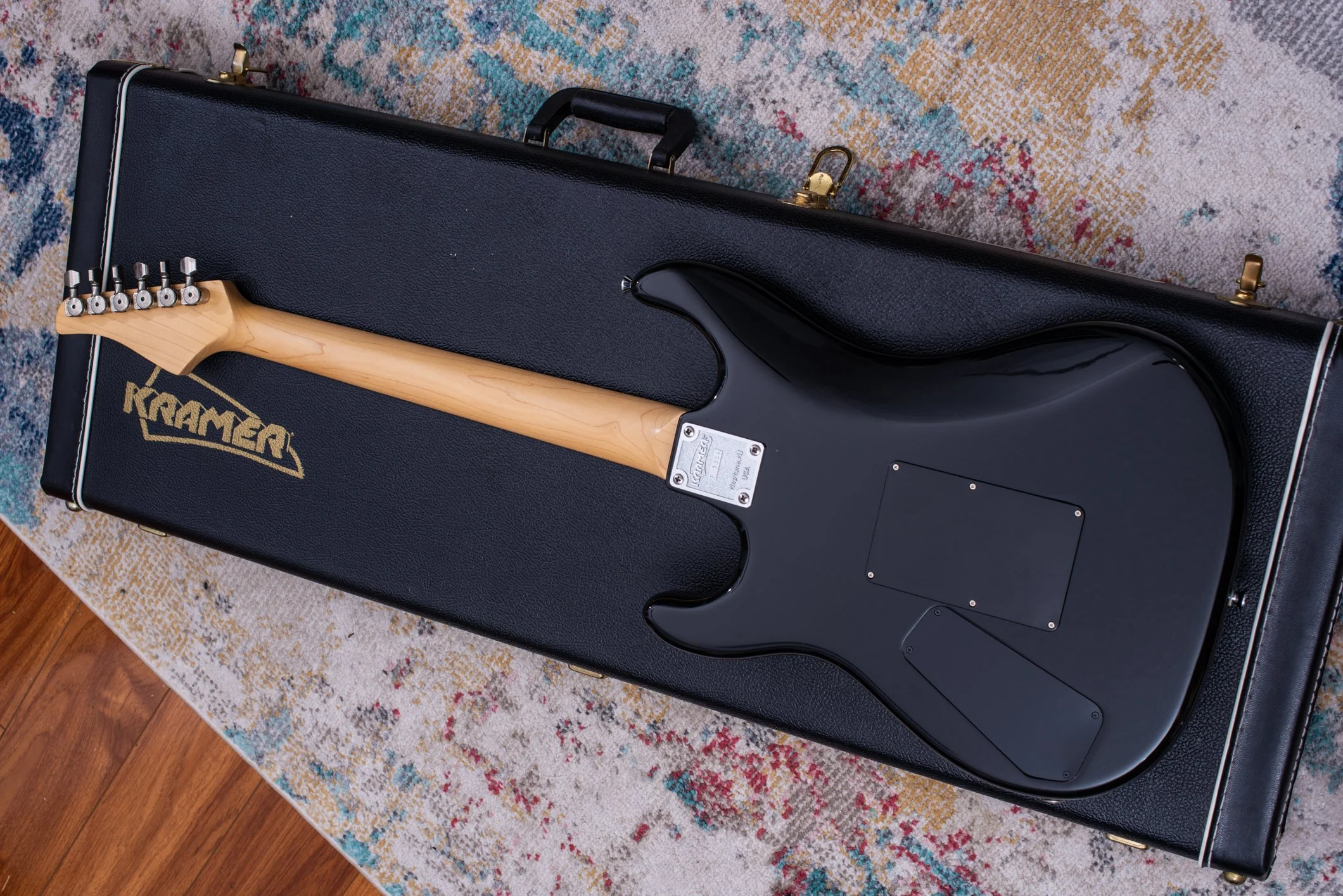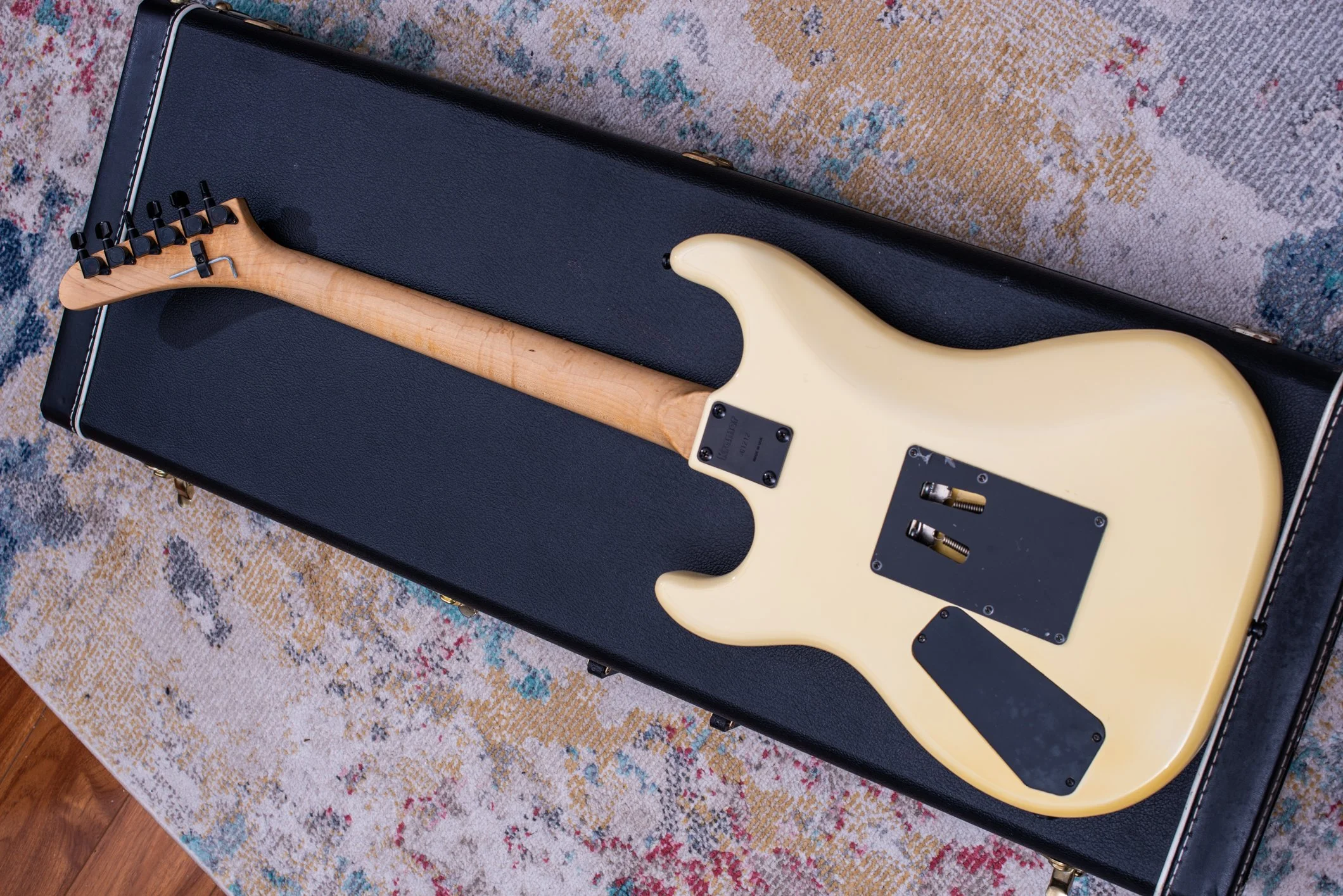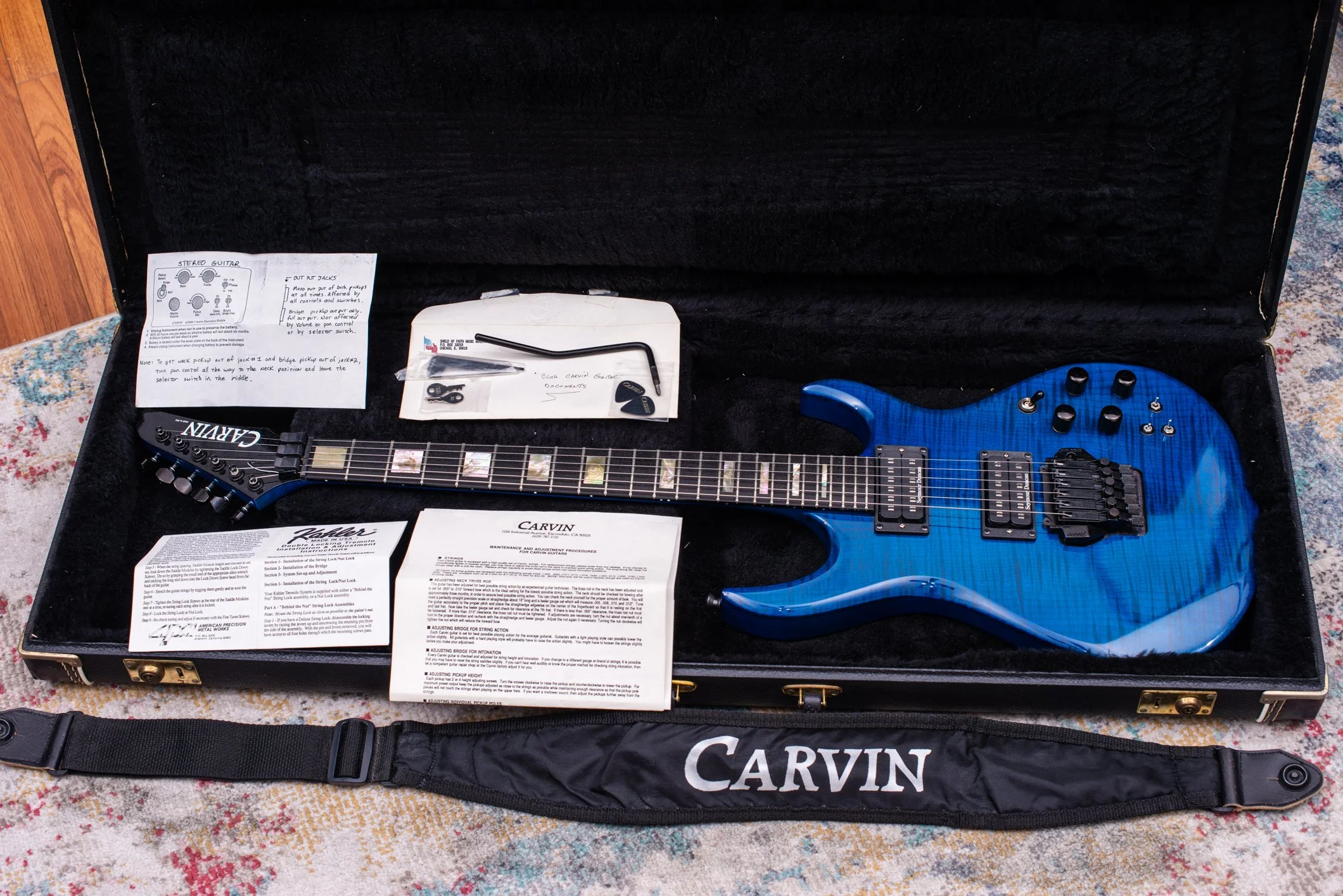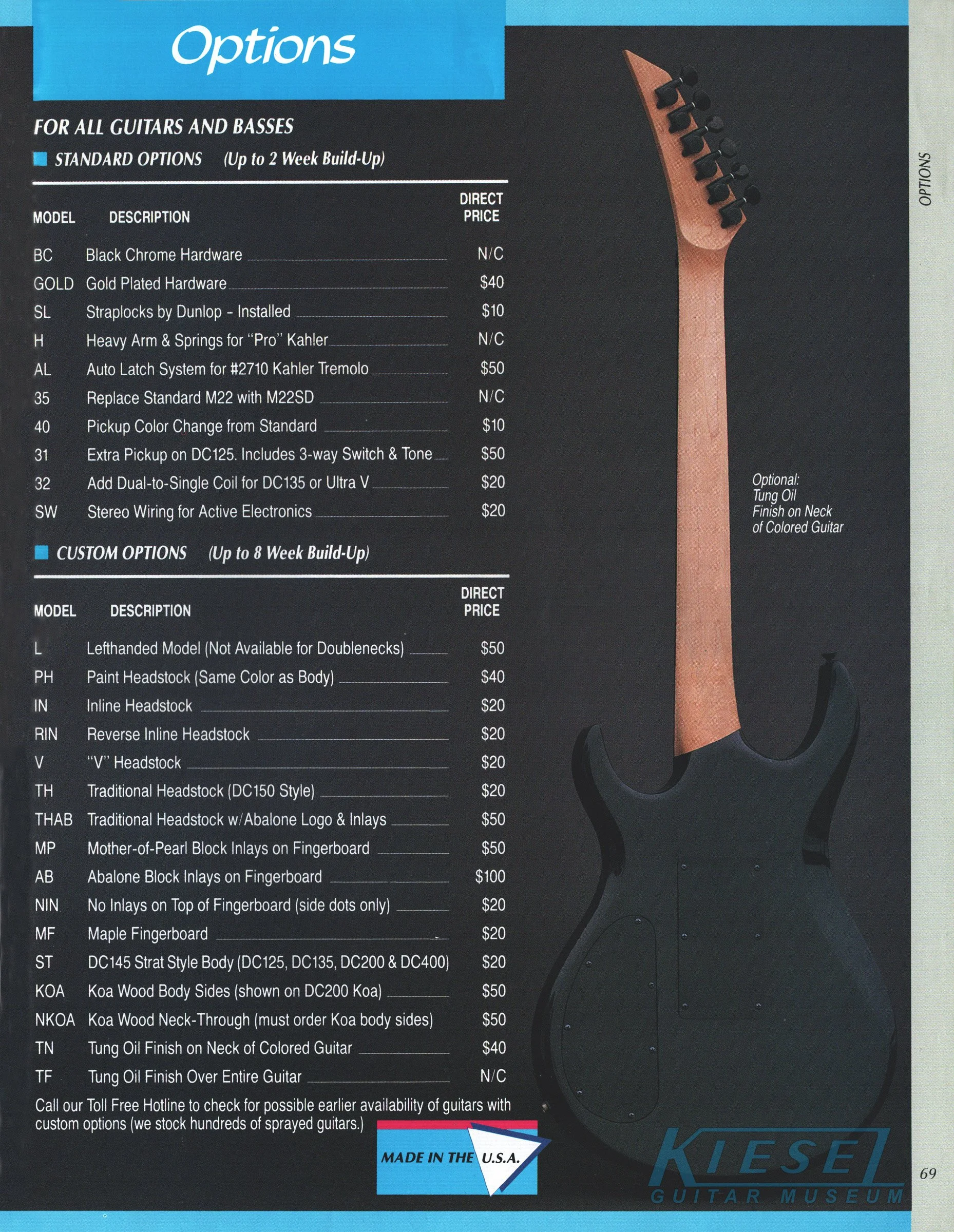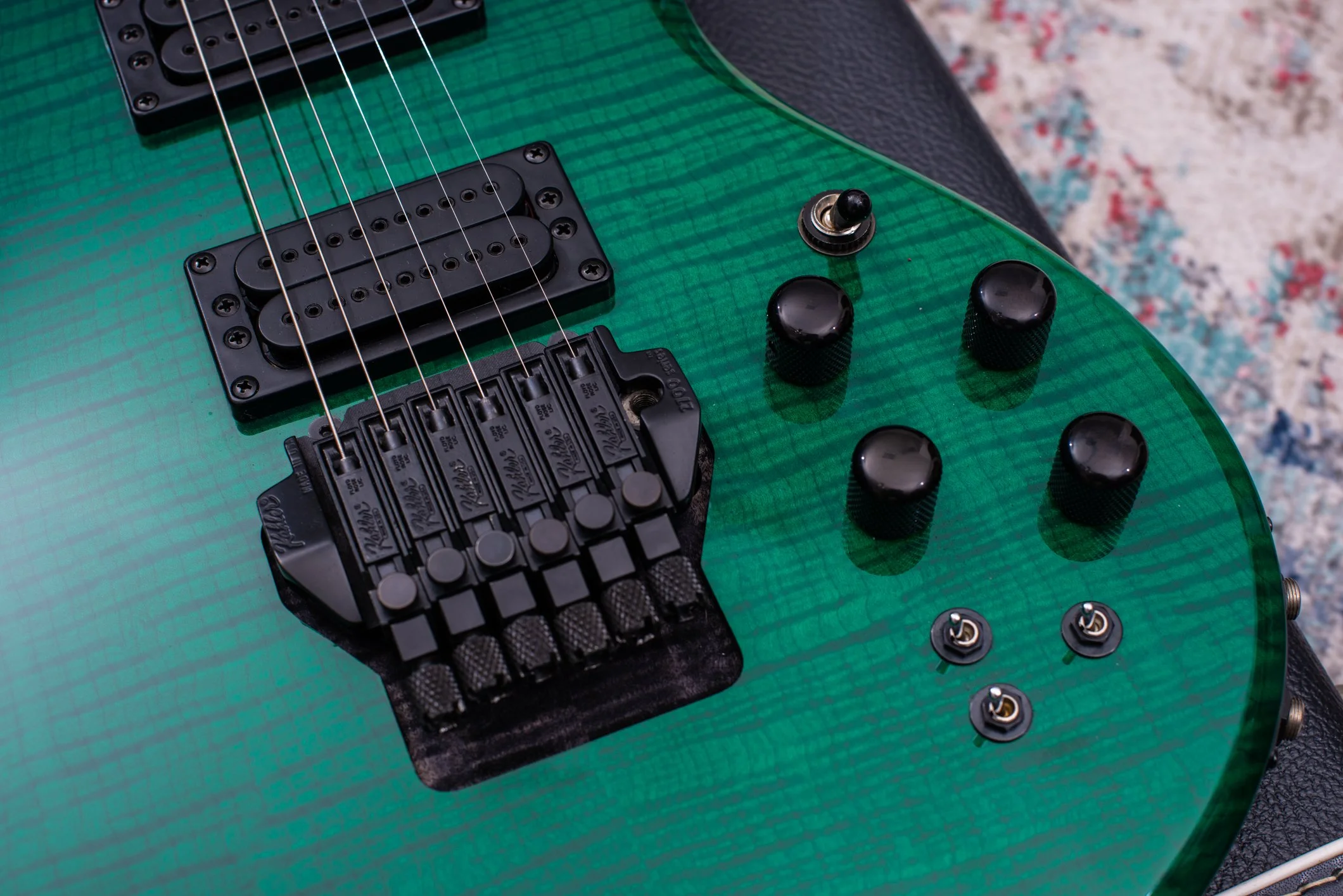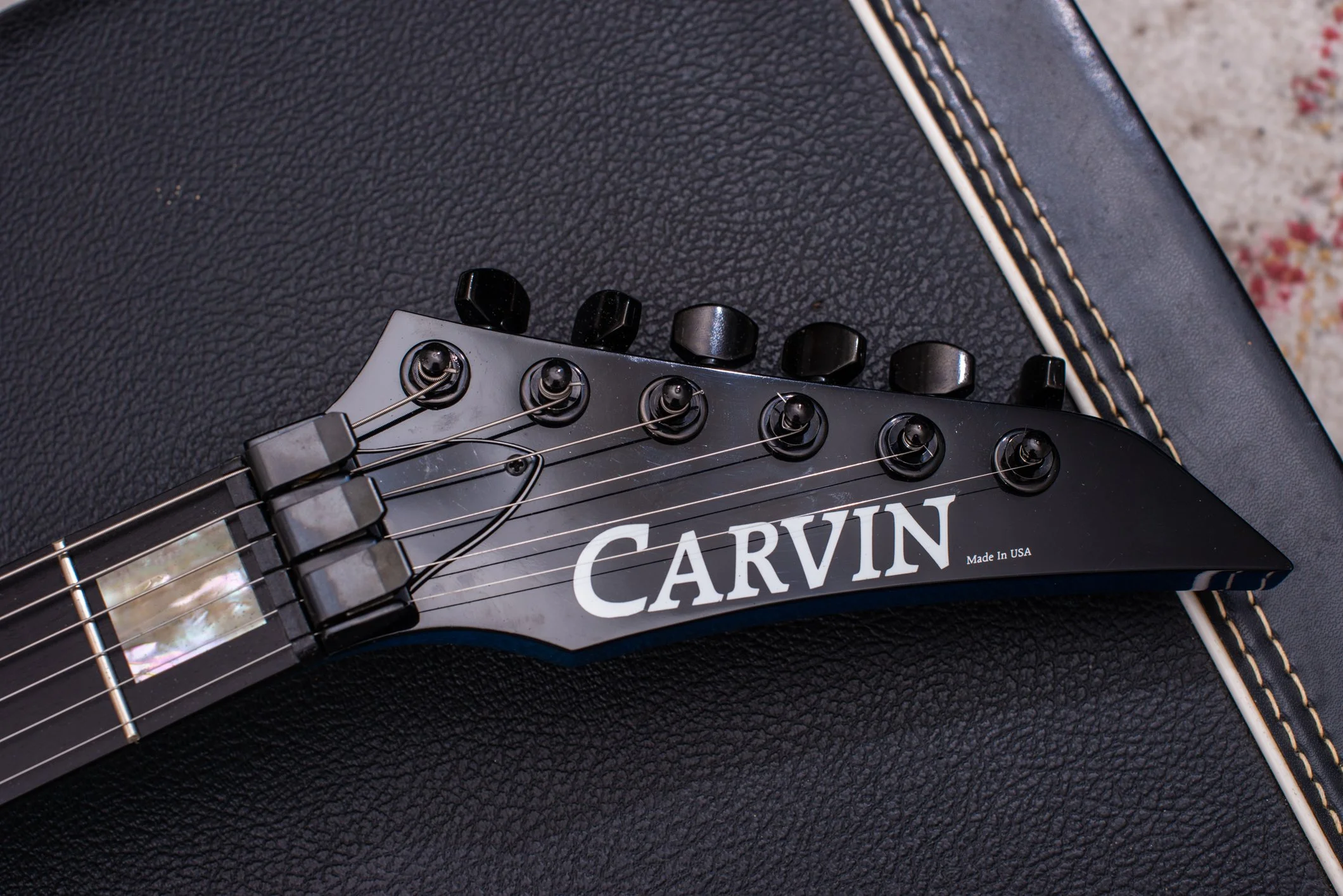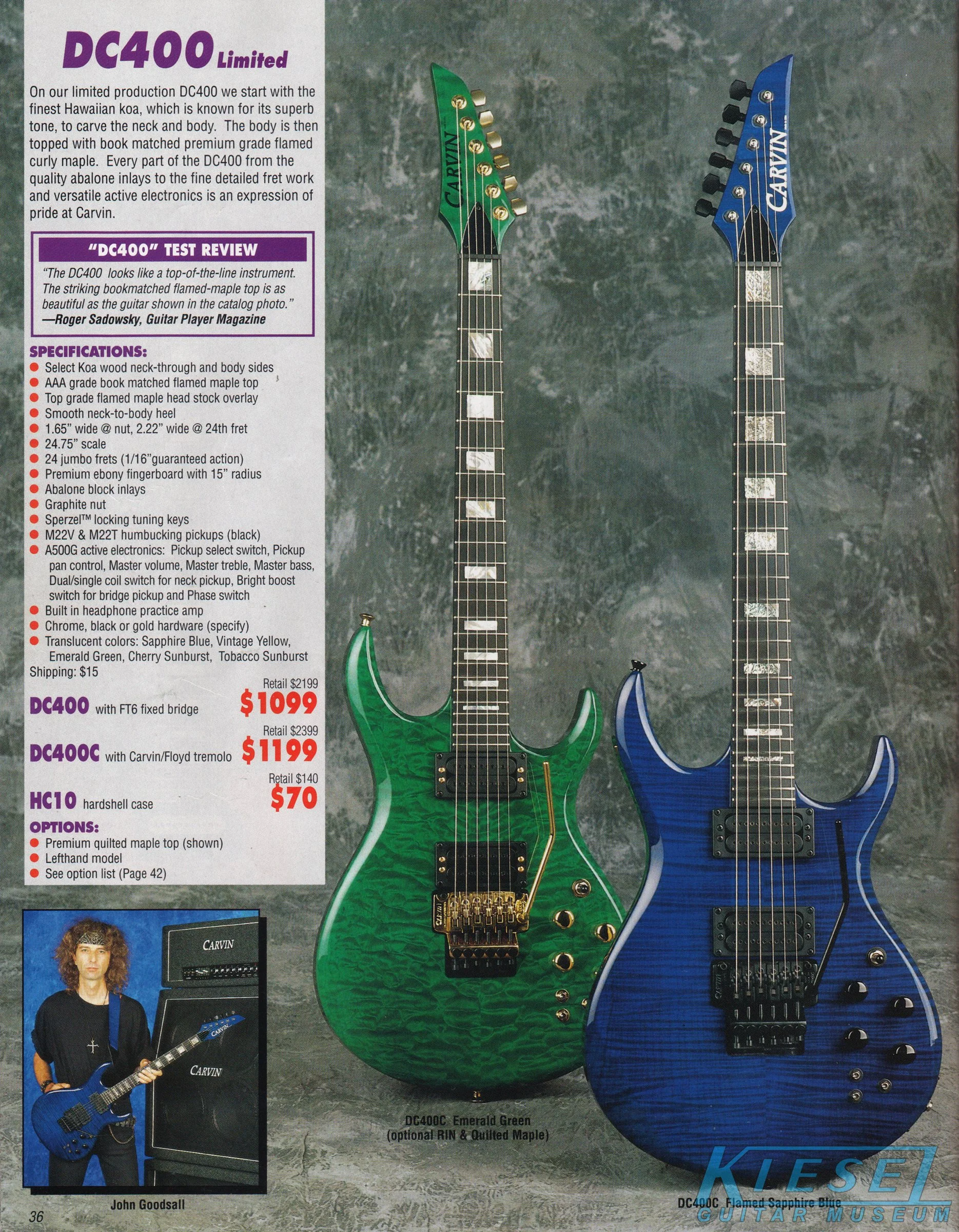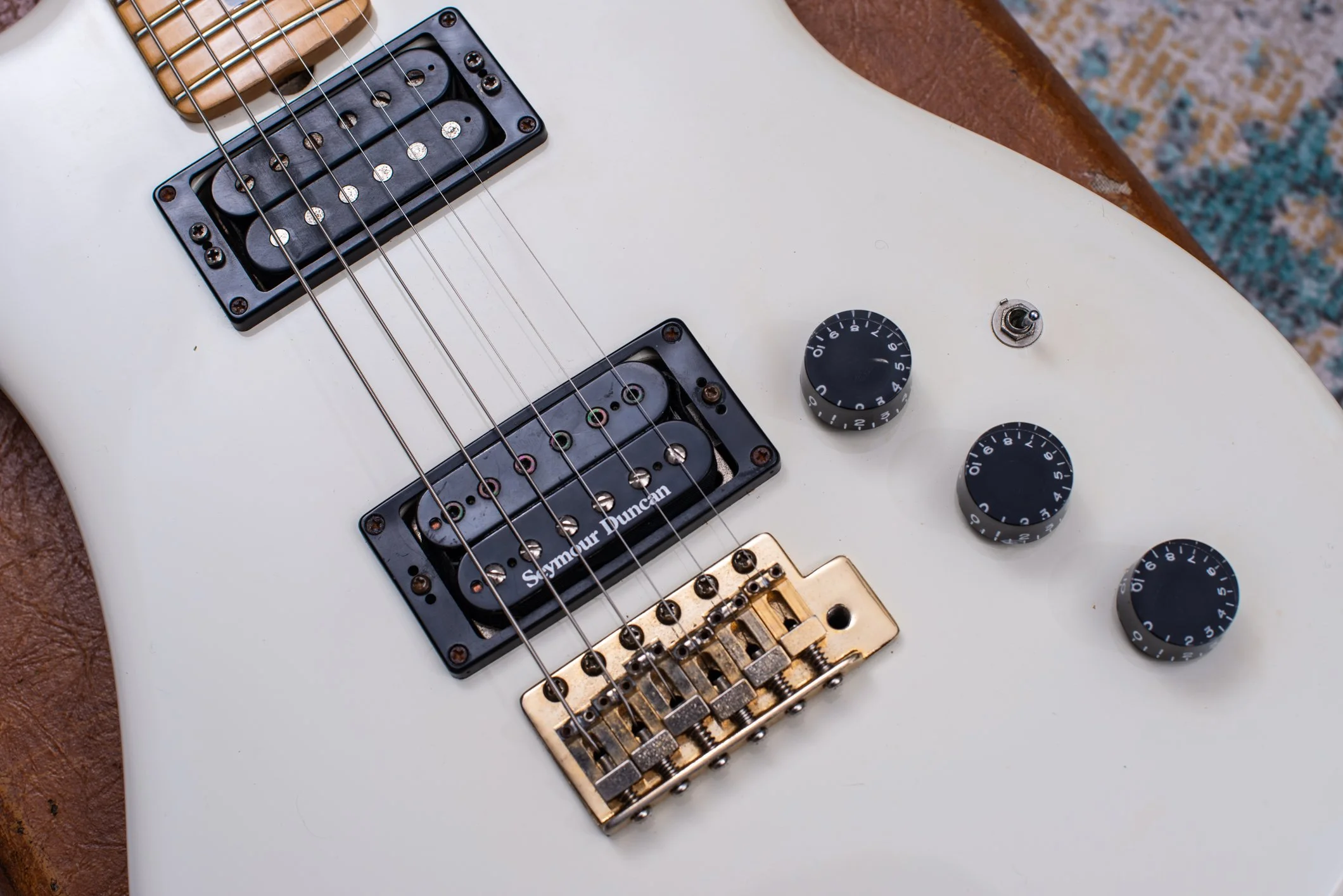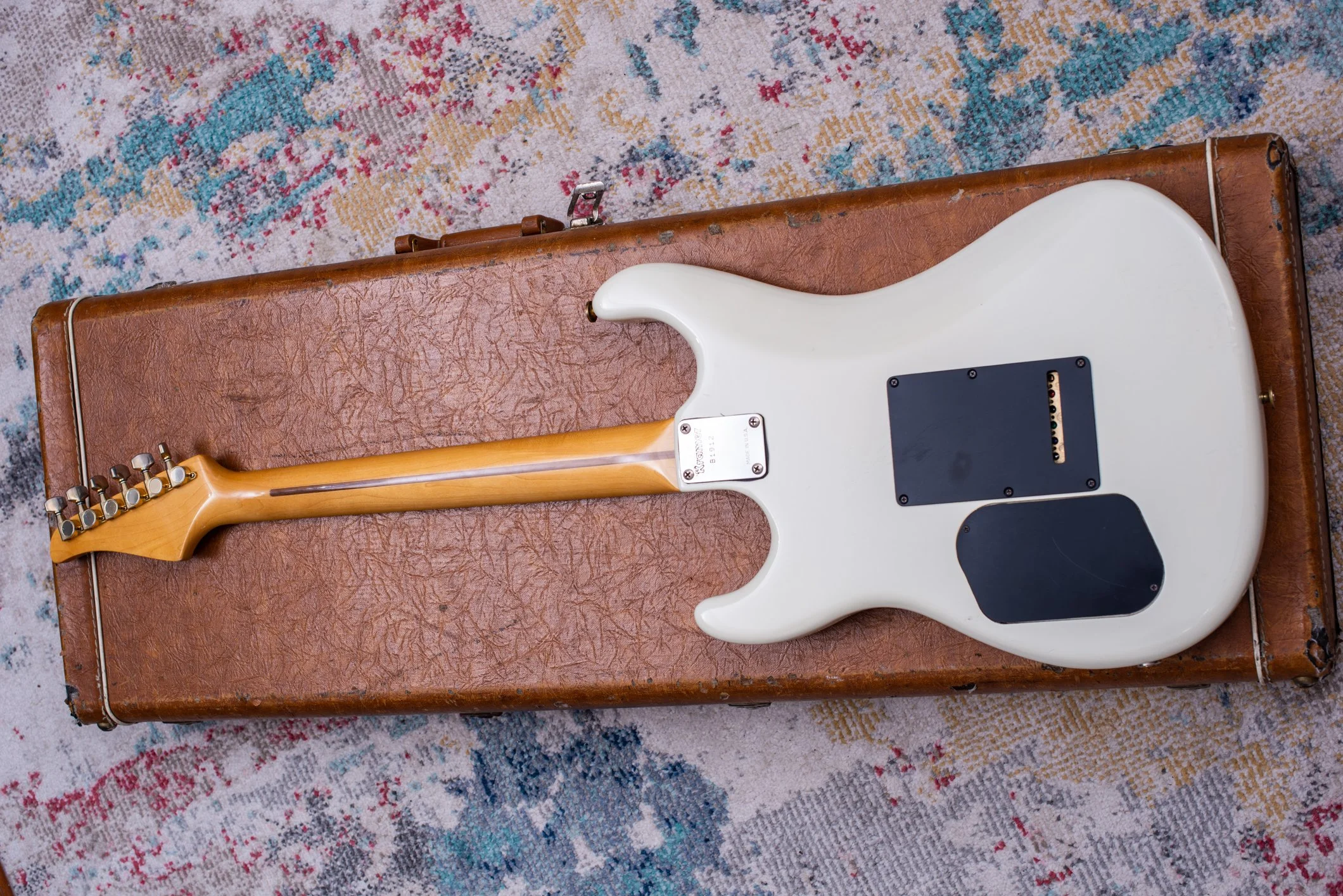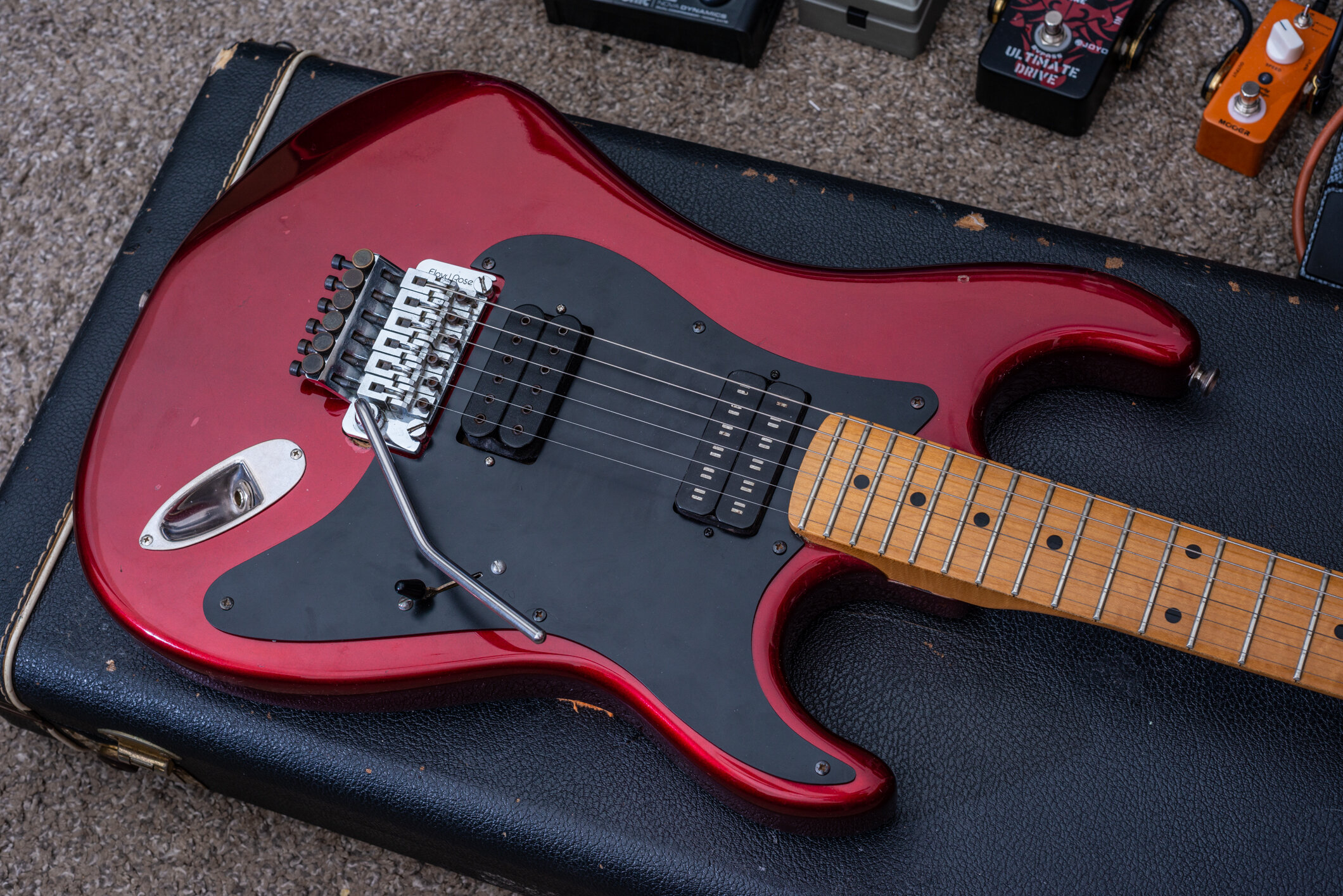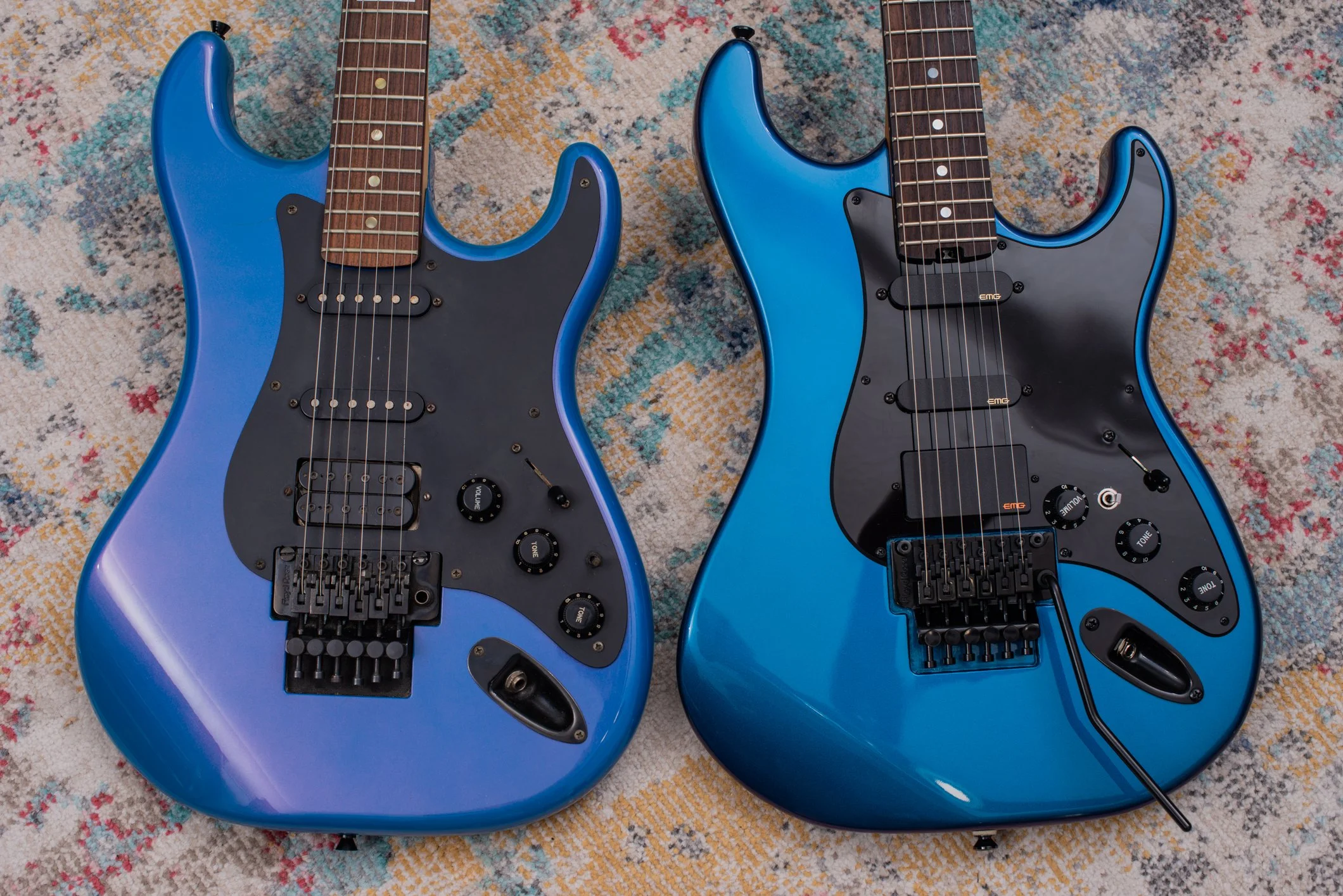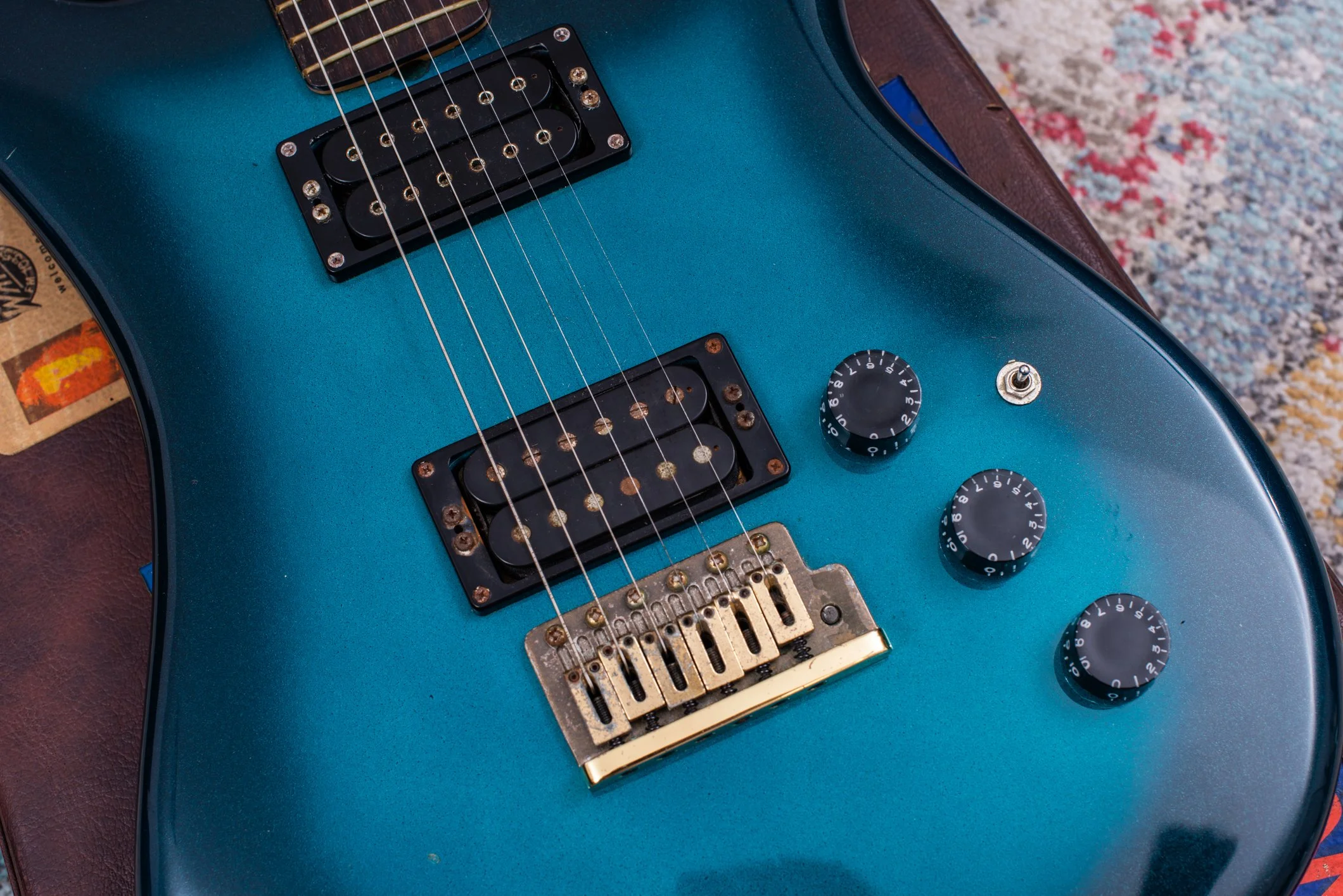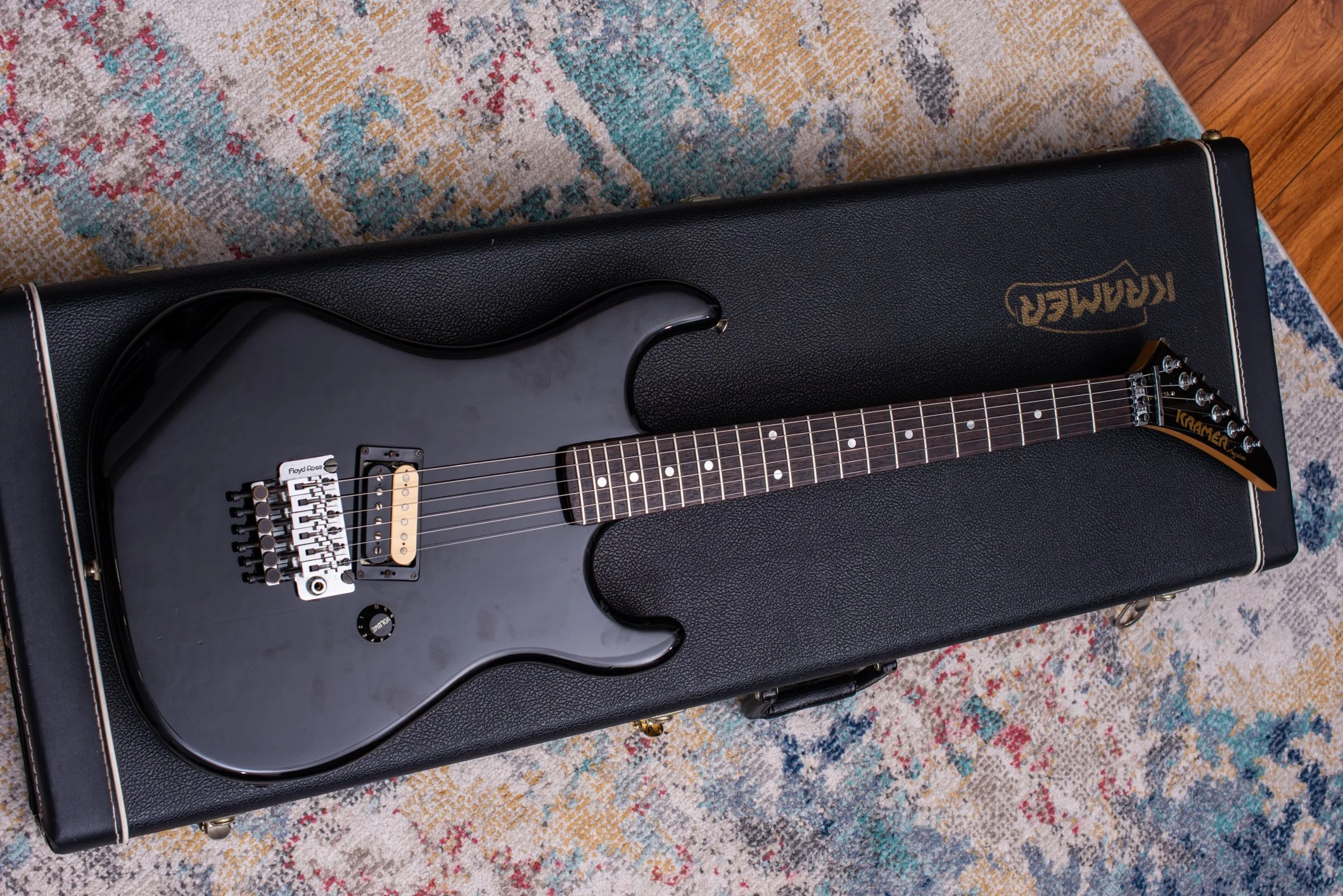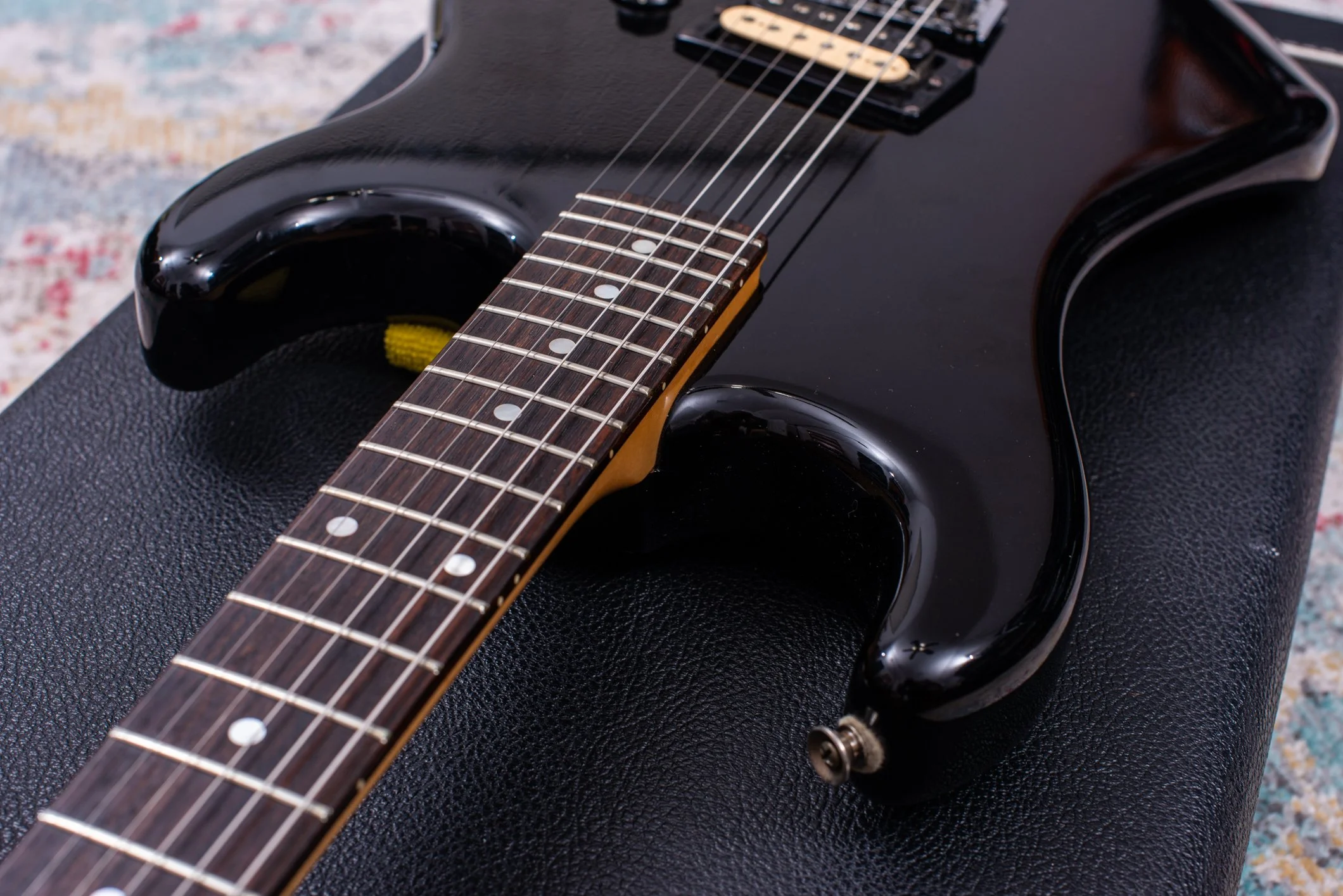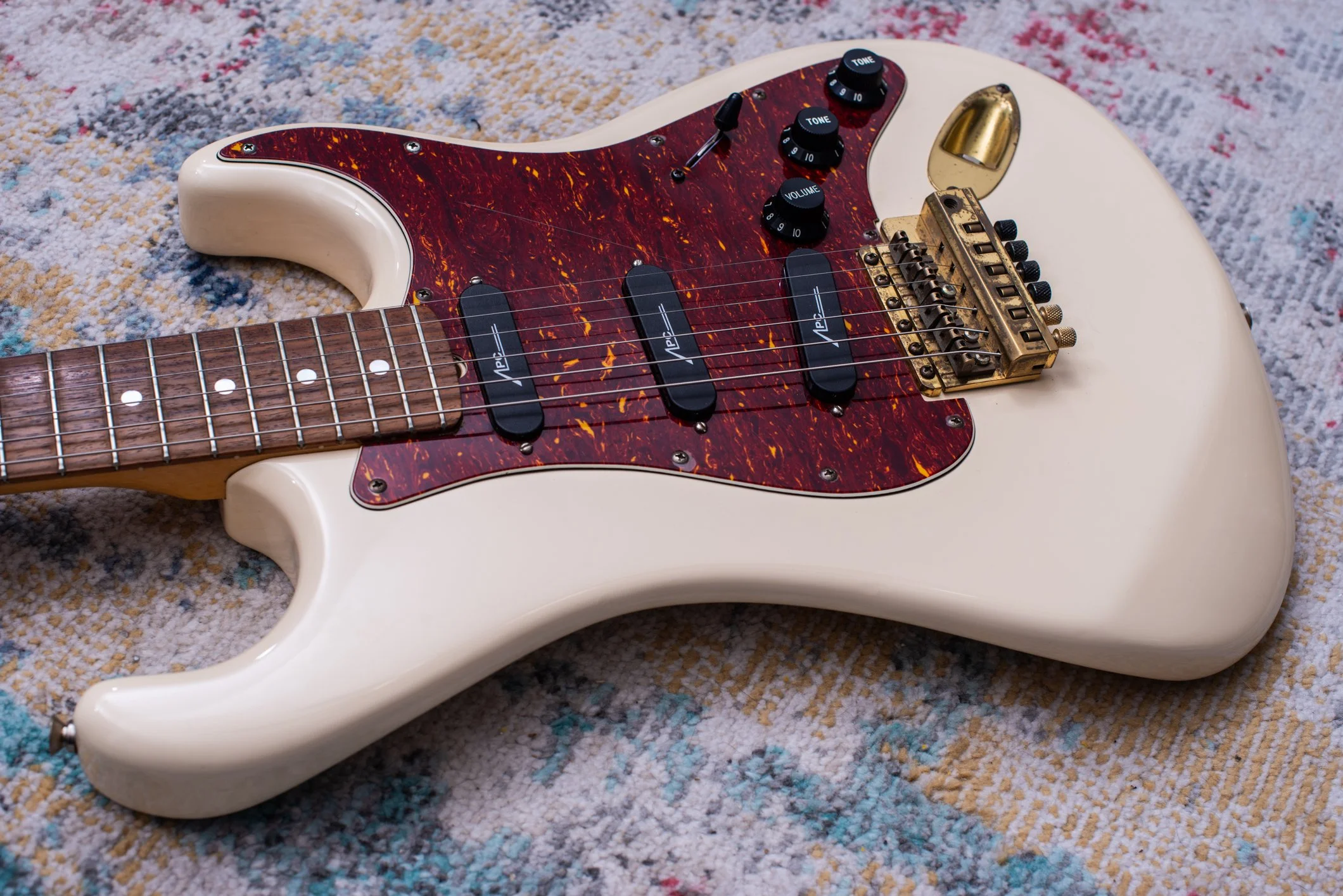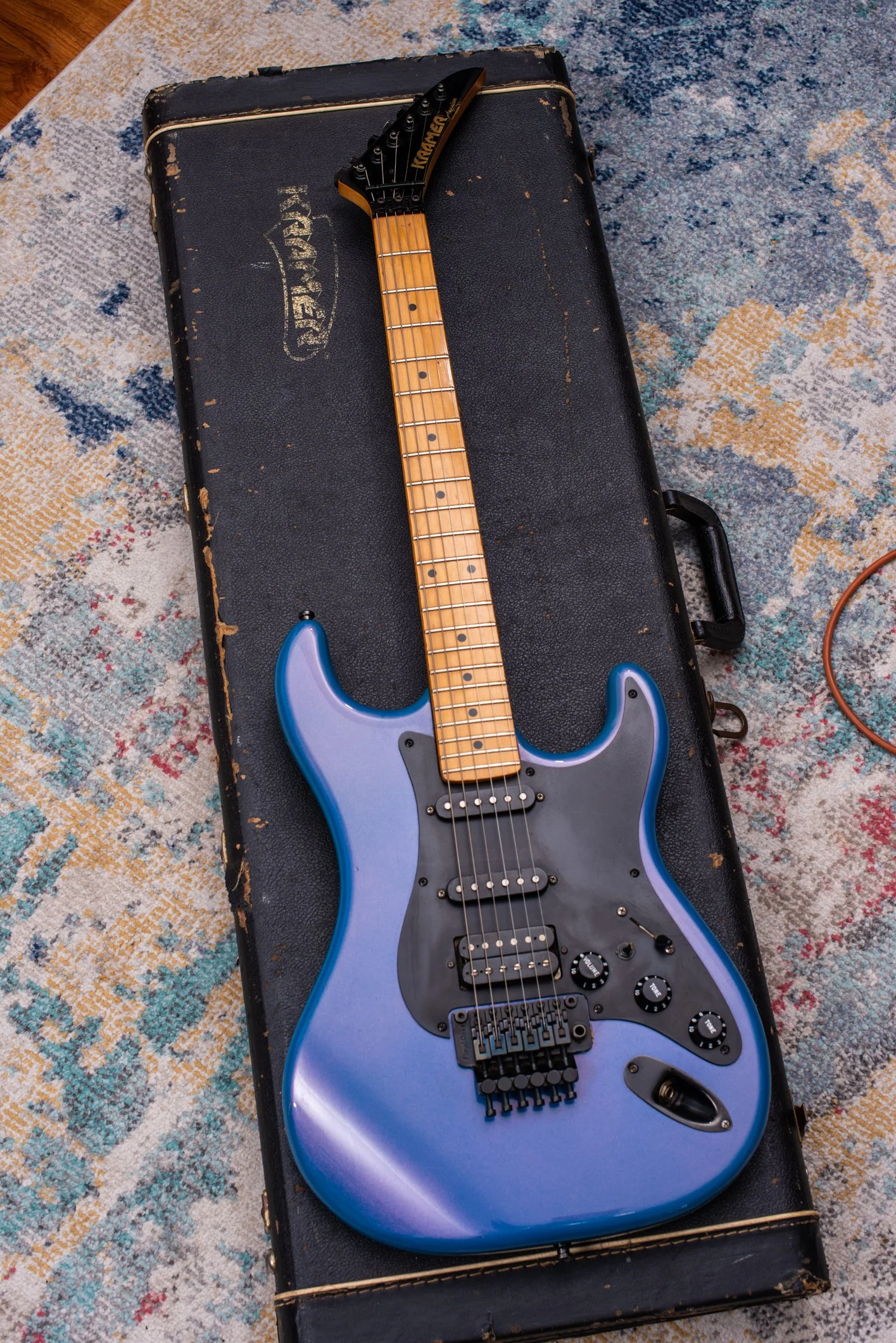As a bit of a Kramer fanatic, I’m always absorbing information about the brand and its turbulent history. As many know, Kramer as we knew it went out of business in 1990 which culminated in an infamous “fire sale” at the factory in Neptune, NJ, where many parts were sold off to pay creditors. The next point that people seem to commonly know is that Gibson bought the brand name and revived it, initially with the online purchase, factory direct “Musicyo” website (a novel idea in 1999 when most guitars were still bought in person), but now with new models in a more traditional distribution style akin to their Epiphone budget brands.
However, there were other attempts to revive the brand during the 90s, and one of those actually produced a handful of very nice, high end, USA made guitars. In 1995, 5 years after the original Kramer company shut its doors, Henry Vaccaro and his team started on producing a new line of guitars under the name “Kramer Music Industries” or KMI. This resulted in a lineup of both wood neck and aluminum neck guitars, sometimes reusing old bodies and necks from the 70s and 80s, but with unique new designs. Still, the designs were in a more classic spirit, as the pointy headstock glam guitar thing was dead and buried by 1995. Check out the catalog scans here on the Vintage Kramer website.
I don’t know how many of these guitars were actually built, but there are quite a few cool designs and they are exceedingly difficult to locate, but I finally got my hands on one. It’s a more basic model, simply called the “Pacer,” which looks and feels just like an early 80s beak headstock Pacer Imperial.
This is definitely the “safer” model in the lineup, and there are only a few noticeable differences compared to a Pacer from 12-13 years prior. The Wilkinson VS-100 tremolo jumps out at me first - no Rockinger or Floyds on any Vaccaro era Kramers. This is a great bridge, and some of my all time favorite Kramers are the early beaks with the traditional strat trems, and this is very similar to that.
Pickups are Seymour Duncans, a JB in the bridge and a Jazz in the neck, with factory chrome covers which look great. The neck is a bit more modern feeling, with a soft feeling satin finish. This contrasts with 80s Kramers which had either a very glossy lacquer or a very not glossy oil finish - it’s in between those in feel which is a really nice compromise. The headstock logo is in a slightly different place and font and sports locking Sperzel tuners. This neck is definitely not a reused Kramer piece, the nut area and wood grain is not consistent with any of the usual beak necks (most of which were made by ESP anyway).
The body on the other hand is almost certainly a spare/NOS Kramer body, or at least it was made on the same tooling or to the same specs, right down to the cavity covers - probably an ESP body. The angular electronics cover is identical in size and shape to the bodies used starting from the end of the beak headstock era (Cxxxx serial number plates and up) and up until the switch to the 7/8 body shape (Fxxxx). The serial plate on this guitar is actually an 80s era chrome Fxxxx plate, and that is as built by Vaccaro in 1995, who likely had access to boxes of unused plates (most plates between F1000 and F3000 were never used on 80s Kramers, there’s a useful collector’s tip for you).
While it’s not the most exciting model or color in the Vaccaro lineup, it is a really sweet guitar to add to my collection, and an intriguing piece of a less known time in Kramer history.
The end of the Vaccaro Kramer story is a sad one, as investors pulled out which resulted in Gibson purchasing the brand in 1997. The high quality USA Kramers we could’ve had were done away with, replaced by Chinese made budget guitars with odd specifications and designs quite unlike past Kramers.
That brings me to the next guitar. By 2005, some renewed interest in the Kramer brand prompted Gibson to build a handful of models in Nashville. This included a USA-made Jersey Star and a Baretta 1985 Reissue. This is actually my second Baretta Reissue, I had a super minty red one which I sold and despite not falling in love with the neck, I do regret selling.
It’s nice to have a second chance to enjoy one of these, and while this one is definitely in a bit rougher condition than my previous one, the neck is unaffected and that’s what really matters to me when it comes to playing.
The body is a heavy, hard maple finished in white, but years in the sun have discolored this into a nice cream color. Features are simple - it’s equipped with a German made Original Floyd Rose bridge, a Kramer JS-91T Zebra pickup (Gibson’s take on a JBJ), and a single volume knob. Sadly a previous owner decked the Floyd, and with the sun damage that has resulted in a paint crack extending from the treble stud, up through the treble side pickup ring screws, all the way to the neck pocket. It’s subtle but quite clear in the right light.
Still, that doesn’t get in the way of a great sounding and playing guitar. The neck is completely bare, with a beautifully figured rosewood fretboard, R2 width nut, and Schaller M6 tuners just like the real ones from 85. My only gripe, same as I said when I got the red one, is that the neck is unfinished. Kramer made hundreds of Barettas in 1985 of which maybe a handful had custom order oil finished necks, the rest all had gloss - which I’d prefer. At least it’s not an R5.
Very minor complaints aside, this is a great playing guitar. Since the floyd is decked already anyway, it’s easy to tune up, change tunings, go to Drop D and so on, so it’s already getting a good amount of play time here.
These USA made Kramers made it until about 2008, when one last model was introduced, a Pacer Imperial Reissue (also with a bare neck, wtf?). These were the last Kramers made in the USA nearly 20 years ago. MSRP was $1849 in the catalog, but the Musicyo website was selling them for $1049 direct (see archive link here).
And sorry to keep complaining, but $1049 in 2006 is about $1700 inflation adjusted for 2025. Gibson has long since done away with USA made Kramers, and instead the top end Baretta is a Japanese made model for $2200. It’s really a shame that Gibson has not come out with a line or at least a model, made in the USA, for under $2000. I don’t know all of the logistical details but it’s hard for me to believe that it couldn’t be done. I very nearly purchased one of the MIJ 83 Barettas, used, which dropped as low as $1100 before selling - that’s the true value of those guitars in my humble opinion.
Okay, old (?) man yells at clouds segment over. I’m super excited to have these two guitars in the collection and put my hands on a piece of Kramer history.
More pictures are in my gallery section if you want to see them up close:

